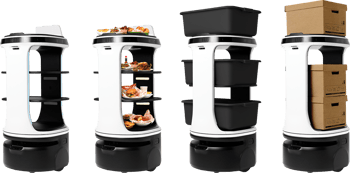When employees decide to leave their restaurant jobs, they’re often reacting to issues that began early on. Ineffective programs for onboarding and restaurant staff training can leave even veteran employees feeling lost, unfulfilled, and disengaged. It’s one of the primary culprits behind the industry’s infamous turnover problem.
Though onboarding programs can make it easier to keep talent on board, most organizations still aren’t devoting enough attention to their employees’ early days. Just 12% of Americans surveyed in a recent Gallup poll said they were satisfied with their employer’s onboarding programs. One in five respondents described their most recent onboarding as poor or, worse, nonexistent.
Those numbers paint a dismal picture, but there’s a bright side. Chances are your competitors haven’t established a dependable program for onboarding and training their employees. Taking the time to refine your processes could make your restaurant a destination for applicants. As you see the benefits of a more informed, engaged, and collaborative staff, you’ll attract more customers too.
The Onboarding Process: A Simple Guide
Every successful restaurant earns the affection of customers by offering something unique. At the same time, no restaurant can succeed for long without a few critical elements like a dedicated staff and the right suite of solutions. Onboarding processes rely on a similar mix of standardization and customization. Here is a quick checklist for you to consider:
- Take care of the paperwork: Collecting essential documents and details is not the most exciting part of restaurant onboarding, but it’s one of the most essential.
- Set up payment: Once you’ve collected the necessary financial paperwork, make sure you’re prepared to start issuing payments. Setting up direct deposit will ensure checks always arrive on time. Employees will appreciate the convenience and dependability of this arrangement.
- Introduce hire to guidelines and policies: Next, familiarize new hires with your employee handbook and other policies that promote a safe, respectful, and productive workplace.
- Pair new hires with mentors: A mentorship program will ensure novice employees get expert on-the-job training as well as opportunities to learn from candid conversations with team members who’ve been there before.
- Offer guided introductions to key processes and tools: New hires have a lot to learn and comprehensive orientation programs can keep it all from becoming too overwhelming.
- Provide and solicit feedback to refine the process: Your onboarding process is meant to evolve over time based on its successes and shortcomings. Throughout onboarding, take care to engage new hires and mentors. Once onboarding is complete, a formal survey or interview can help you collect insights for making improvements.
Tips for Building an Effective Restaurant Staff Training Program
A great training program boosts productivity and performance, ensuring your team delivers on their potential to wow your customers. By boosting retention, effective training processes can ultimately reduce the amount of time you spend hiring and bringing employees up to speed each year.
Introduce a formal mentorship program
Gallup also asked American workers about their job priorities. Unsurprisingly, pay claimed the top spot, but the chance to learn on the job and grow into new roles came next. Introducing mentorship programs is an easy way to give new hires the educational perks they’re looking for. These programs reward veteran employees too, showing them how much you value their experience and hard-won subject matter expertise.
Assign both types of shadow shifts
Shadowing mentors can help new hires learn the ins and outs of their roles, but how can you confirm that the lessons are sticking? By assigning reverse shadow shifts. This arrangement sees mentors shadow their mentees, monitoring a normal workday and offering a hand where necessary.
Cross-train where possible
Even restaurants that manage to keep turnover low can find themselves short staffed. Encouraging your team to dabble in different areas of the business can help ensure you’re never without key capabilities. That said, make sure you’re not sacrificing safety or making employees uncomfortable in the name of building a cross-functional team.
Create a feedback loop
Your team members only thrive when they receive constructive feedback on an ongoing basis. You can only refine your approach to interviewing, hiring, and on-boarding by soliciting the opinions of those who take part in these processes. With the candidate and employee in mind, you’ll naturally develop programs designed to boost job satisfaction and retention.
Promote ongoing restaurant staff training
Training never stops – not even for your senior employees. A truly effective approach to restaurant staff training offers plenty of opportunities for ongoing learning. Remember, you should commit to continuous learning too. Look for the potential lessons in your ongoing conversations with customers and employees.
The 4 Cs: Why Are Onboarding and Training Processes Essential?
First introduced by Dr. Talya Bauer from the Society for Human Resource Management, the 4 Cs of successful onboarding help summarize the key benefits of investing in your employees’ early days and weeks.
Compliance
From HR policies for restaurants to health and safety standards, a top-notch onboarding and training framework promotes compliance with a range of rules and regulations. Restaurant staff training and onboarding also helps encourage new hires to stick to best practices for all of your processes. Shadowing veteran employees on the job can make the transition into day-to-day work smoother for employees from both sides of the house.
Clarification
Onboarding, orientation, and training processes shouldn’t leave new hires with many questions. If your processes are effective, new hires should have had time to get the answers they need to excel in their roles. The more time you take to clarify a new hire’s responsibilities, the less time you’ll spend repeating yourself or redirecting their efforts in the future.
Culture
Your restaurant’s unique norms, values, and traditions are part of what makes it special. Make sure new hires feel comfortable immersing themselves in your workplace culture. Here’s an area where your mentorship program can go a long way.
Connection
Restaurant staff training and onboarding programs help foster a sense of belonging. As you orient them and facilitate introductions, you’ll start to build the connections and communication channels that your restaurant needs to thrive.
The fifth C: confidence
The traditional four Cs cover a lot of ground. They can go a long way in helping you both build a program and gauge its success. The fifth C, confidence, ties it all together. Strong processes for onboarding, training, and managing your employees will ensure they feel confident in their abilities and confident in your commitment to them.





